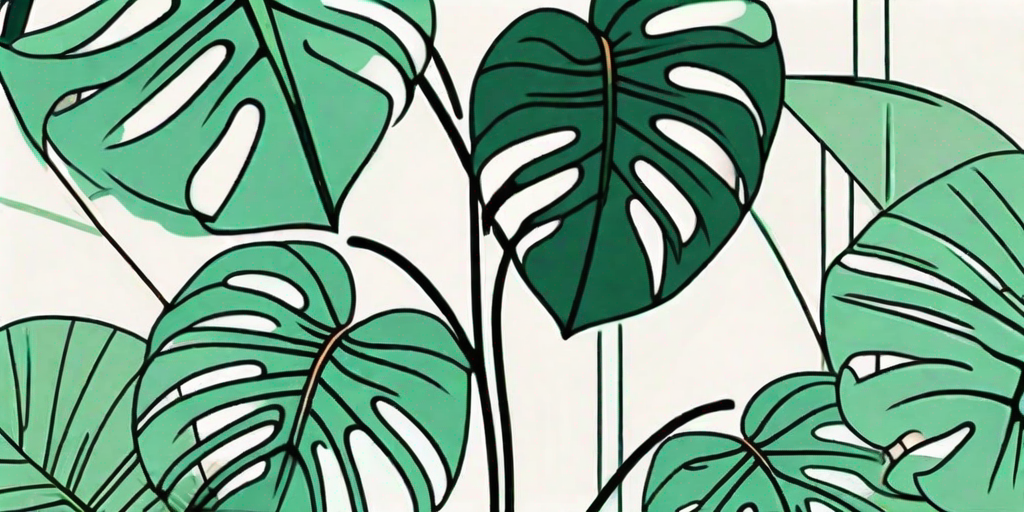
If you're a proud plant parent, you're probably familiar with the Monstera, a tropical plant known for its large, glossy leaves and air-purifying qualities. But what do you do when your Monstera starts to look a little...leggy? Fear not, plant enthusiasts! We've got the tips and tricks to transform your lanky Monstera into a lush, healthy, Instagram-worthy specimen.
Understanding Your Monstera
First things first, let's get to know your Monstera a little better. This plant is a native of the tropical rainforests of Central and South America. It's a climbing plant, which means it naturally seeks out something to latch onto and grow upwards. In the wild, this would be a tree trunk, but in your living room, it might be a bookshelf, curtain rod, or unsuspecting houseguest.
Monsteras are known for their large, heart-shaped leaves with distinctive holes or fenestrations. These holes allow light to filter through to the lower leaves, ensuring the plant gets enough sunlight even in the dense rainforest. In your home, this means your Monstera is a bit of a drama queen when it comes to light. It wants lots of it, but not too much. It's like the Goldilocks of houseplants.
Why Is My Monstera Leggy?
So, why is your Monstera looking more like a beanstalk than a bushy plant? The most common reason is lack of light. Remember, Monsteras are sun divas. If they're not getting enough light, they'll stretch out in search of it, resulting in long, leggy stems with few leaves.
Another reason could be lack of support. As climbing plants, Monsteras need something to grow on. Without it, they'll just keep growing upwards, resulting in a tall, skinny plant. It's like a teenager who hit a growth spurt and hasn't filled out yet.
How to Fix a Leggy Monstera
Step 1: Assess the Light Situation
First, check if your Monstera is getting enough light. It should be in a bright, indirect light location. Direct sunlight can burn the leaves, so avoid placing it in front of a south-facing window. East or west-facing windows are usually best. If you don't have enough natural light, consider getting a grow light. It's like a sunbed for your plant, minus the risk of skin cancer.
If your Monstera is already in a bright location and still leggy, it might be getting too much light. Try moving it to a slightly shadier spot and see if that helps. Remember, Monsteras are fussy about light, so it might take a bit of trial and error to find the perfect spot.
Step 2: Provide Support
Next, give your Monstera something to climb on. This could be a moss pole, trellis, or even a piece of driftwood. Attach the plant to the support using soft ties, making sure not to damage the stems. As the plant grows, it will naturally start to climb the support, resulting in a fuller, bushier plant.
Don't worry if your Monstera doesn't take to the support right away. It might take a bit of coaxing. After all, it's been used to doing its own thing for a while. Be patient and persistent, and your Monstera will eventually get the hang of it.
Step 3: Prune and Propagate
If your Monstera is still leggy after adjusting the light and providing support, it might be time for a haircut. Pruning can help promote bushier growth and give your plant a more compact shape. Plus, you can use the cuttings to propagate new plants. It's like getting two plants for the price of one!
Use a clean, sharp pair of pruning shears to cut just above a leaf node. Make sure to leave at least one node on the stem, as this is where new growth will emerge. Place the cutting in water or moist soil and wait for roots to develop. Once the roots are a few inches long, you can plant the cutting in its own pot. Congratulations, you're now a plant grandparent!
FAQs
- Why are the leaves on my Monstera turning yellow?
Yellow leaves can be a sign of overwatering. Monsteras prefer to dry out a bit between waterings, so make sure you're not drowning your plant in love (and water).
- Why are the leaves on my Monstera turning brown?
Brown leaves can be a sign of underwatering or low humidity. Try increasing the frequency of watering or misting the leaves to increase humidity.
- Why are the leaves on my Monstera not splitting?
Young Monsteras often have solid leaves. As the plant matures, the leaves will start to develop the characteristic holes or fenestrations. Be patient, your Monstera is just a late bloomer.
Conclusion
With these tips and tricks, you can transform your leggy Monstera into a lush, healthy plant. Remember, plant care is a journey, not a destination. Don't be discouraged if your Monstera doesn't transform overnight. With a bit of patience and persistence, you'll soon have a plant that's the envy of all your friends (and their plants).
So go forth, plant parents, and unleash the beauty of your Monstera. And remember, when in doubt, just give it a bit more light, a bit more support, and a bit more love. After all, isn't that what we all need?















